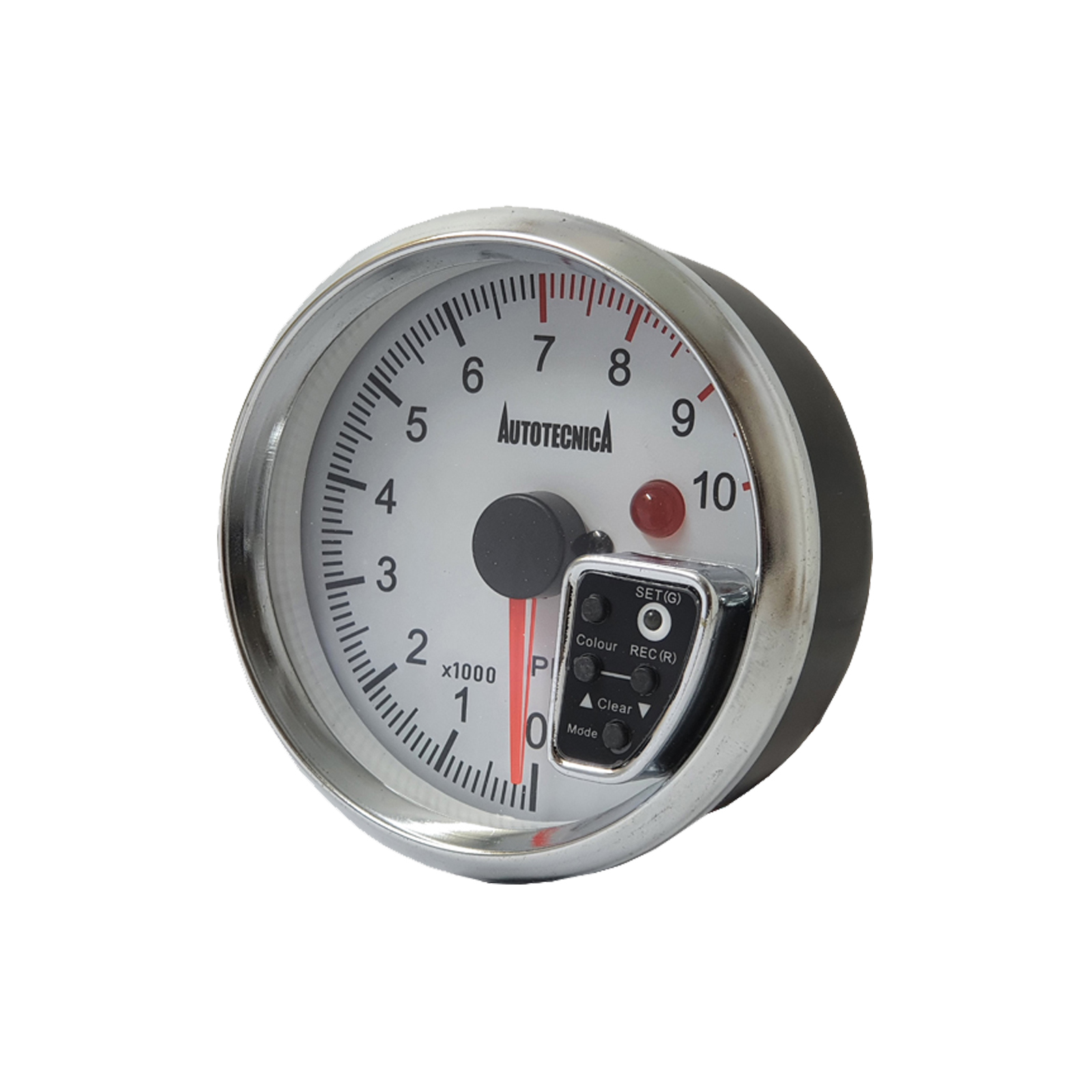Comprehensive Guide to Comprehending and Utilizing a Tachometer Successfully
Comprehensive Guide to Comprehending and Utilizing a Tachometer Successfully
Blog Article
Discovering the Functions and Advantages of a Tachometer: A Comprehensive Guide for Cars And Truck Fanatics
From giving real-time information on engine rate to aiding in optimizing gear shifts, the tachometer offers as more than simply a dial on the dashboard. Its complex features not just enhance driving experience yet also play a pivotal role in preserving engine wellness and performance.
Understanding the Basics of a Tachometer
In the world of vehicle instrumentation, comprehending the basics of a tachometer is vital for any cars and truck enthusiast looking to dive right into the intricacies of engine performance monitoring. A tachometer, usually displayed on the dashboard of a vehicle, gauges the engine's changes per minute (RPM)
Tachometers typically have a scale marked in changes per minute, with a redline suggesting the maximum rate at which the engine can securely run (tachometer). This details is crucial for protecting against engine damages and optimizing equipment moving for hand-operated transmissions. In addition, tachometers can assist in detecting engine concerns such as misfires or a falling short ignition system by spotting uneven RPM analyses
Relevance of Keeping An Eye On Engine Speed

The engine speed, gauged in transformations per minute (RPM), shows just how fast the engine's crankshaft is revolving. Monitoring engine rate is especially important throughout gear changes, as it helps vehicle drivers establish the right time to change equipments for smooth acceleration and efficient gas usage.
In addition, tracking engine rate can additionally give beneficial understandings right into the overall health of the automobile. Uncommon variations in RPM might indicate concerns such as a blocked air filter, gas system problems, or perhaps engine misfires. By detecting these irregularities early on through the tachometer analyses, chauffeurs can address possible concerns immediately, avoiding much more severe damage and pricey repairs down the line. Overall, checking engine speed with a tachometer is a fundamental practice that can boost driving performance, prolong engine life, and guarantee a much safer and extra pleasurable driving experience.
Enhancing Efficiency Through Equipment Shifts
Appropriate equipment moving guarantees that the engine runs within its optimum power band, enabling for smooth velocity and improved gas economic climate. When changing gears, it is his comment is here essential to pay interest to the engine speed showed on the tachometer.

To attain peak performance through gear changes, chauffeurs need to practice smooth and prompt transitions in between gears, matching engine speed with road rate to harness the full possibility of their car's powertrain.
Taking Full Advantage Of Performance With a Tachometer
Mastering the art of gear changing in high-performance vehicles not just enhances driving experience yet additionally plays an important role in taking full advantage of performance with a tachometer. tachometer. By paying very close attention to the tachometer readings, motorists can maximize their gear shifts to run within the engine's most effective array. When speeding up, changing equipments at the best RPM indicated my site by the tachometer can protect against the engine from exhausting or underperforming, leading to boosted gas efficiency and overall efficiency
In addition, a tachometer assists motorists prevent unneeded revving, which not just squanders fuel however also places unneeded pressure on the engine. Regularly keeping track of the tachometer while driving allows for smoother equipment changes, reducing damage on the transmission system in time.

Advanced Tips for Tachometer Usage
To delve right into advanced tips for tachometer application, take into consideration incorporating the use of change lights. Shift lights are aesthetic indications that illuminate when it's time to change equipments based on engine changes per min (RPM), permitting for smooth equipment modifications without frequently monitoring the tachometer. By fine-tuning shift points and setting warning limits, vehicle drivers can enhance acceleration and engine efficiency while decreasing the risk of over-revving.
Verdict
To conclude, the tachometer serves as a crucial tool for auto lovers to monitor engine rate, improve performance via equipment shifts, and take full advantage of efficiency. By understanding the functions and benefits of a tachometer, motorists can enhance their driving experience and lengthen the life-span of their car. Using innovative tips for tachometer application can further boost driving skills and overall efficiency when driving.
Report this page